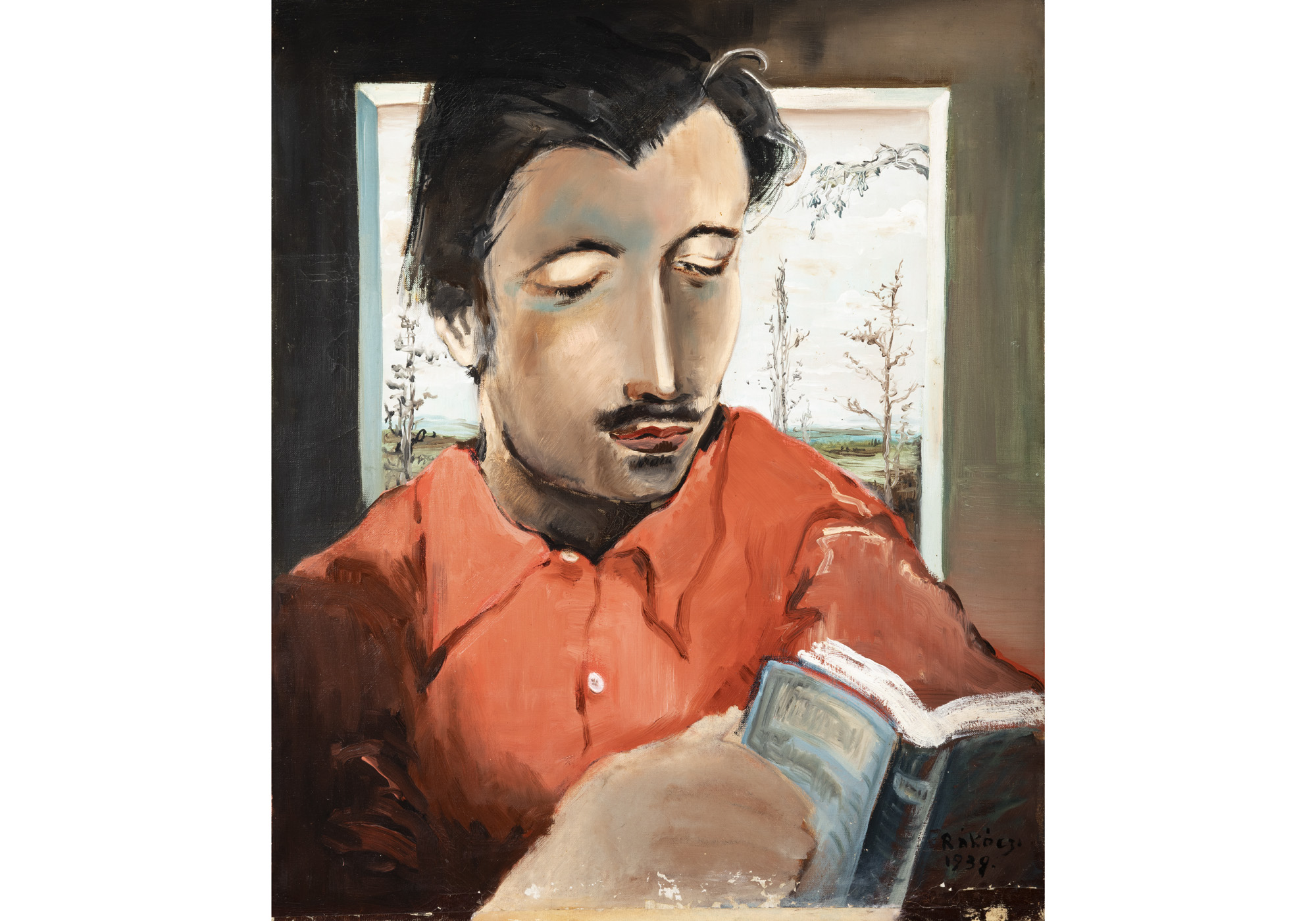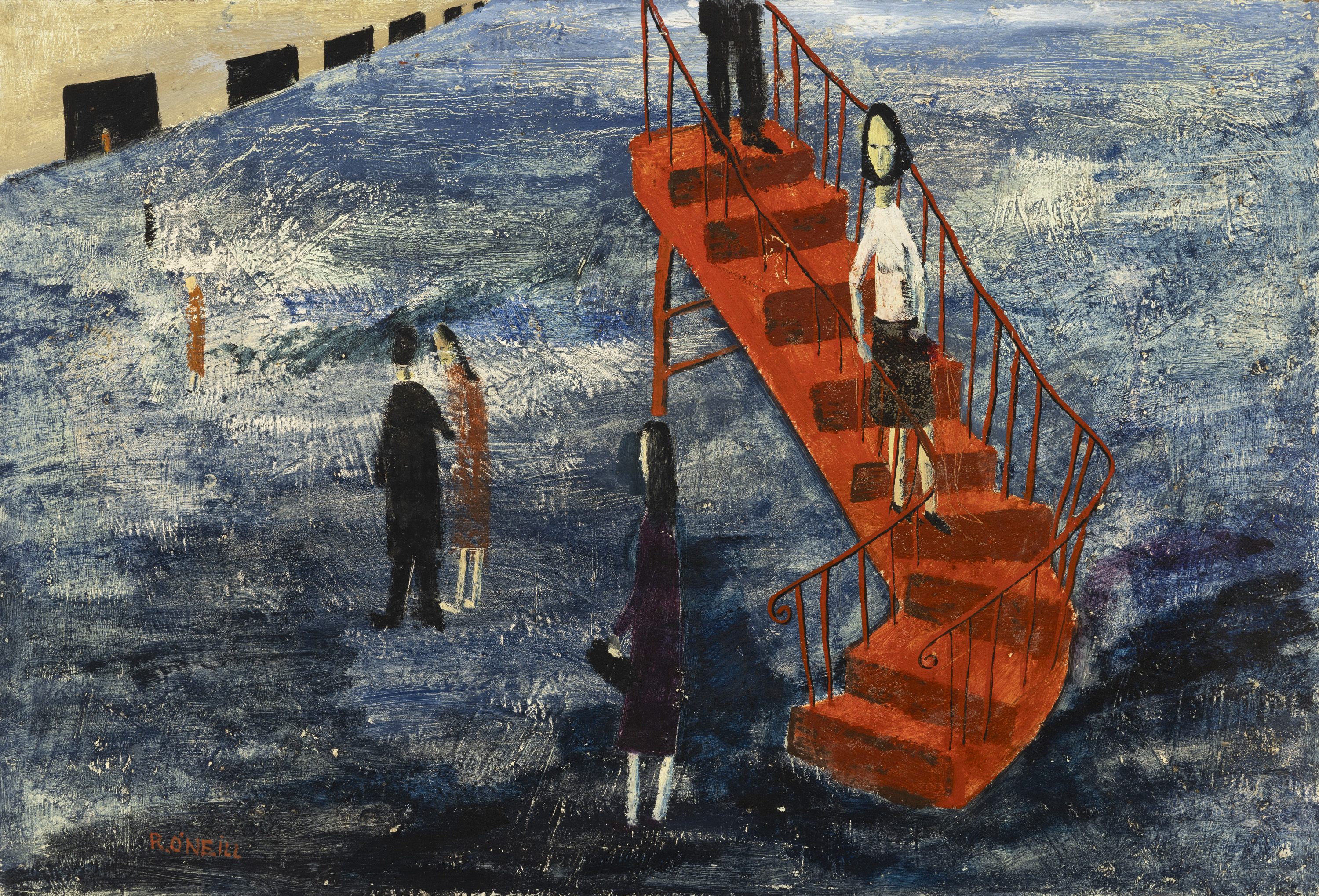Departments
.svg)


.jpeg)
In recent years, significant exhibitions have sought to re-examine experimental painting in Europe and the United States from the late 1960s and 70s. These exhibitions aimed to establish a new discourse around painting from that period, which was once considered under attack by both conservative defenders of tradition and those who deemed painting irrelevant to other experimental art forms. Amidst this, Cecil King's work faced criticism from Irish reviewers who misjudged his contributions, labelling his modernist abstraction as outdated. However, with nearly forty years since King’s death, his legacy can be reassessed in the context of the emergence of modernism in Ireland and his role in promoting international ideas here.
King, a self-taught artist, began painting seriously in 1954, producing works that varied in style but consistently explored line, form, and tone. Over time through the ‘60s, a minimalizing tendency emerged in his work, leading to the geometric abstraction for which he became best-known. His early works, such as the Trapeze paintings, foreshadowed his later hard-edge style, where he focused on the relationship between form and space. By the late 1960s, King had found his voice, exemplified in the Baggot Street series, where figurative elements were reduced to geometric forms and fields of colour. His work from this period shows a meticulous attention to line and composition, contrasting with the spontaneity of Abstract Expressionism. King’s Baggot Street and subsequent Berlin series demonstrate his interest in the emotional resonance of place, linking his abstract works to specific locations and experiences.
.jpeg)
King’s work was influenced by several currents within international art, particularly those associated with the European avant-garde and American abstract expressionism. Peter Murray notes that King’s geometric abstraction drew comparisons to the "high-minded austerity" of artists like Josef Albers and Piet Mondrian, aligning his work with the broader modernist discourse that emerged from movements such as the Bauhaus and De Stijl. King’s approach to painting involved a rigorous exploration of surface and medium, aligning him with contemporary trends in New York, such as those exhibited in “High Times Hard Times: New York Painting 1967-1975”. While his work shared visual affinities with artists like Barnett Newman, it was distinct in its intent and process. King's geometric abstractions, which he continued to develop through the 1970s and ‘80s, were part of a broader movement in experimental painting that defied the supposed "death of painting" in the mid-20th century. Despite the challenges posed by Ireland's often-conservative art scene, King pursued his abstract style with determination.
The ROSC exhibitions, organised by King, his partner Oliver Dowling, and others, were instrumental in shaping the development of modern art in Ireland. These exhibitions were a series of landmark events that introduced contemporary international art to Irish audiences, dramatically altering the cultural landscape of the time. King’s organisational skills and vision were crucial in overcoming the challenges associated with these ambitious exhibitions. Richard Demarco highlights King’s "extraordinary gifts as a negotiator and coordinator," which were essential in bringing the ROSC exhibitions to fruition. Moreover, King's role in these exhibitions extended beyond mere organisation; he was a key figure in ensuring that the exhibitions maintained a high level of quality and relevance, ultimately placing Dublin "on the international art-world map.”

Cecil King’s legacy in the context of Irish art is multifaceted. His work and contributions through ROSC positioned him as a central figure in the history of modern Irish art. Peter Murray suggests that King’s involvement in the ROSC exhibitions and his connections to international art movements helped "position Irish art within a broader global context," making him a crucial link between Ireland and the international art world.Additionally, King’s artistic practice, marked by a rigorous commitment to geometric abstraction, left a lasting imprint on the aesthetic development of Irish modernism. His influence is further underscored by the recognition of his work and ideas in subsequent exhibitions and critical discussions, which continue to affirm his place within the international discourse of modern art. His work, often misunderstood in its time, is now recognised as a crucial part of the evolution of experimental painting here, influencing subsequent generations of artists and challenging the boundaries of what painting could achieve.




Through this article, let our expert Adam Pearson guiding you to the (re)discovery of the once established Irish painter Richard O’Neill.












Buying at Auction and the Role of Antiques in a Modern Home



Important Irish Art Auction Highlights

Oliver Dowling Collection by Aidan Dunne




2024 is a year in which Adam’s wants to recognise the key role buying antique furniture and furnishings at auction contributes greatly to the sustainable initiative. In 2019 the Environmental Protection Agency reported stark figures that each year in Ireland 1.2 million reusable bulky items, primarily furniture goes into landfill. Similar to the problem of ‘fast fashion’, the constant production and consumption of new items is leading to rapidly growing waste problem. We want to acknowledge those who are already buying second hand or antique furniture at auction and to encourage new buyers by highlighting the benefits of acquiring affordable, well-made quality items that are built to last.







Irish author, recipe creator and lifestyle influencer, Indy Parsons, selects her favourite pieces from our upcoming Fine Jewellery & Watches auction










.jpg)

Cork-born Irish actress, Sarah Greene, selects her favourite pieces from our upcoming Fine Jewellery & Watches auction




Yvonne Aupicq had met Orpen, we understand, while working as a nurse during the war. He had been admitted to hospital with a suspected case of scabies which ended up being a far more serious case of blood poisoning as he recounts in his wartime memoir ‘An Onlooker in France’. Their relationship continued after 1918 when Orpen was appointed as the official artist to The Paris Peace Conference. They relocated to capital and over the following decade he painted her numerous times, often nude as in Amiens 1914, or The Rape and Nude Girl Reading (1921). Working with her as his model during these early years after the war allowed Orpen an opportunity to re-fuel his creativity.






Editor-in-Chief of IMAGE Publications, Lizzie Gore-Grimes, selects her favourite pieces from our upcoming Fine Jewellery & Watches auction

Our upcoming Fine Jewellery & Watches auction on September 13th features a prime example of Van Cleef & Arpel's renowned 'Mystery Setting'


Our June auction offers a once-in-a-lifetime opportunity to acquire one of the great masterpieces of Irish art and icons of Dublin’s history.



Georgia Chiesa selects some of her favourite lots in the upcoming Vintage Wine & Spirits Auction


"Beating the bounds is a tradition that can be traced back to the medieval period. At this time, land was divided into parishes and the clergy and church wardens held the responsibility for its upkeep and management. It was up to the Church to ensure that its parishioners knew the local boundary lines and, before maps became commonplace, this had to be kept as a mental record."

Adam’s in conjunction with Suzanne MacDougald are proud to host an online timed auction of artworks to aid the Irish Red Cross’s humanitarian work in delivering vital services to millions of people impacted by the conflict in Ukraine. With no buyers premium 100% of the hammer price will go directly to the Irish Red Cross.

Ros Drinkwater writes of Jack B Yeats' 'The Boat' in the Business Post:


With a consolidated result of €320,000,the At Home sale in Stephan’s Green, was a great success.

